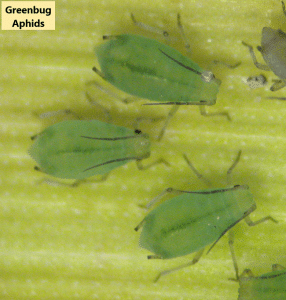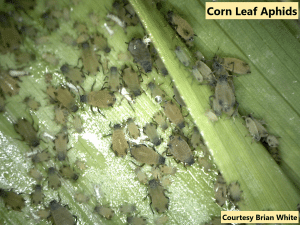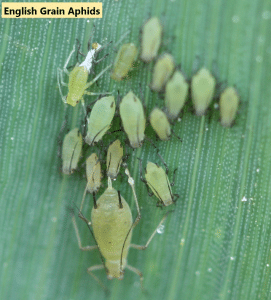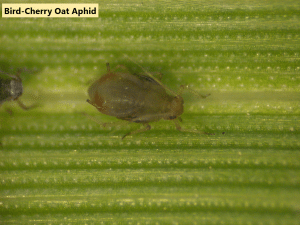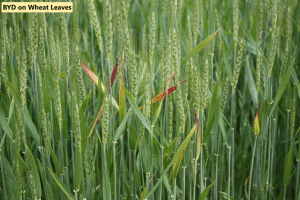Management options
| Insecticide (Trade Names) for APHIDS | Lb Active Ingredient per Acre | Amount Formulation per Acre | Performance Rating |
|---|---|---|---|
| Seed Treatments | |||
| clothianidin (NipsIt Inside 5) | 0.75 - 1.79 oz per 100 lb seed | 8 | |
| imidacloprid (Gaucho 600) | 0.8 - 2.4 oz per 100 lb seed | 8 | |
| thiamethoxam (Cruiser 5) | 0.75 - 1.33 oz per 100 lb seed | 8 | |
| Foliar Treatments* | |||
| dimethoate 4 | 0.25 - 0.375 | 8 - 12 oz | 7 |
| methomyl (Lannate LV 2.4) | 0.225 - 0.45 | 12 - 24 oz | 7 |
| β-cyfluthrin (Baythroid XL 1) | 0.014 - 0.019 | 1.8 - 2.4 oz | 8 |
| γ-cyhalothrin (Declare 1.25) | 0.015 | 1.54 oz | 8 |
| λ-cyhalothrin (Warrior II 2.08) | 0.02 - 0.03 | 1.28 - 1.92 oz | 8 |
| Z-cypermethrin (Mustang Maxx 0.8) | 0.02 - 0.025 | 3.2 - 4 oz | 8 |
*See label for suggested insecticide rates for different species
- Early planted wheat is more likely to be infested by aphids during the fall and often results in higher infection with BYD. Thus, planting is not recommended until October 15 or later, which also helps avoid infestations from Hessian fly.
